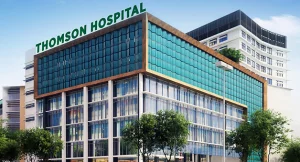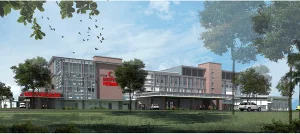As the new ‘architect’ at ORANGEBEAM, Dato’ Faris Yahaya has drawn up a bold blueprint together with his team, focusing on bringing intentional disruption of technologies in its businesses. ORANGEBEAM aims to build on the foundation of this highly technical building and construction landscape to disrupt the industry and build the future.

Hospitals and healthcare facilities are highly regulated environment with one of the most complex ecosystems. The wide range of facilities consists of different building types, services and systems, each with different needs and challenges to address respectively. The construction process for healthcare is more complex with emerging healthcare disruption, ageing infrastructure and increasing patient demands for better services and facilities. Many claim that healthcare construction is “recession proof,” but that does not mean it continues with the same ease as in good economic times because the demand for healthcare services and facilities has only increased over the years, regardless of the state of the economy or cost escalation.
The healthcare industry in Malaysia is proving to be one of the most competitive industries today. According to business consulting firm Frost & Sullivan, we are seeing increased industry spending with estimations reaching RM80 billion by 2020, fuelled up by growing demand for healthcare services and emergence of new care models. These tech-infused new care models used today is a great example of disruption in the industry. One of many examples would be Artificial Intelligence (A.I.) with its breakthrough in sensors, medical technologies, and patient and clinical data. Wireless sensors are used to capture and transmit patient vitals more frequently and seamlessly to provide caregivers real-time alerts, so they can respond more promptly to unexpected changes.
Healthcare consumers are becoming ‘digitally empowered’ and this demands the providers to give greater emphasis on patient experience design. This requires new healthcare facility design requirements and adaptive technology-implementation strategies. With the increasing demand in the healthcare industry, we see an explosive number of expansion plans and acquisitions by top providers in Malaysia. The plans include expansion and retrofitting of existing facilities because greenfield hospitals take longer to complete.
It is imperative that healthcare providers work together with construction companies to identify and tackle the unique challenges and requirements that come with expansion or retrofitting projects during the construction phase that includes air infiltration and contamination, temperature and humidity control; utilities interruption, and even traffic within the facilities. Tackling these challenges requires application of technology and innovative methods during the design-and build process. This is a crucial first step so that the providers can deliver the best possible uninterrupted patient care whilst observing higher standards for cleanliness and hygiene.

Effective communication is critical and without it, this tangled web can be easily misunderstood, causing delay in time and increase in cost. This is where today’s cutting-edge software plays a critical role in enabling real-time changes and informed decision-making. With software like Building Information Modelling (BIM), the process of creating and managing digital information about a built asset needs to be the standard for building projects, especially in the construction of complex healthcare project. ORANGEBEAM fully utilises BIM Level of Detail (LOD) 300 and 500 for our on-going projects like Thomson Hospital Kota Damansara and Pendang Hospital. These models provide value to a project by not only ensuring we meet project timeline but sustainable planning and collaboration that reduces errors and costs.
With the right technology, capturing and accessing the immense amount of facility data required in a building becomes effortless and this will benefit the facility management team when it comes to future builds and building maintenance. There is a large amount of collaboration that will be necessary between developers, providers and various government bodies to realise this integration.
Ultimately, disruption is inevitable in healthcare because it can support and enable medical breakthroughs at a faster pace, resulting in better patient outcomes. In this transformational journey, ORANGEBEAM aspires to be part of the point of intervention and be the voice of the industry. This will be done through collaborative efforts in the education and awareness — by advocating the need to adopt and infuse the right level of technologies across the ecosystem together, with players, regulators, government stakeholders and end-users across industries.
For further information, please visit www.orangebeam.com.my
-end-




